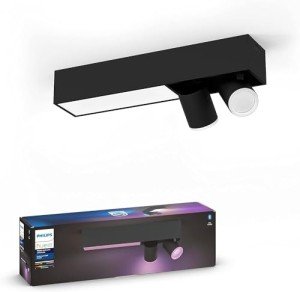Who's The Most Renowned Expert On Contemporary Lighting UK?
Contemporary Lighting in the UK: Transforming Spaces with Illumination
Lighting plays a vital role in specifying the ambiance and performance of any space. In the UK, contemporary lighting has emerged as a substantial design aspect, providing innovative solutions that mix looks with practicality. This post explores the different styles, materials, and innovations shaping contemporary lighting, in addition to ideas for picking the most ideal fixtures for numerous settings.
The Evolution of Contemporary Lighting
Contemporary lighting in the UK shows the altering tastes and technological advancements in design. It encapsulates a broad variety of styles, including:
Minimalist: Characterized by simplicity and tidy lines, minimalist lighting fixtures concentrate on kind and function without unnecessary embellishments.
Industrial: Inspired by urban settings, industrial lighting integrates basic materials like metals and woods with bold designs, producing edgy, functional pieces.
Scandinavian: Known for its heat and simplicity, Scandinavian lighting often includes soft colors and natural products, focusing on producing a cozy atmosphere.
Smart Lighting: This modern trend incorporates technology with style, allowing users to control their lighting with mobile apps, voice commands, or automation systems.
To show the advancement and variety in the field of contemporary lighting, think about the table listed below, which highlights crucial attributes of different styles.
Design
Key Characteristics
Popular Materials
Perfect Spaces
Minimalist
Simple, practical designs
Metal, glass, wood
Modern homes, offices
Industrial
Raw, unfinished look
Steel, concrete, wood
Lofts, galleries
Scandinavian
Relaxing, warm aesthetic appeals
Natural fibers, light wood
Living spaces, cafes
Smart
Integrated technology, automation
Differs extensively
Homes, workplaces, retail areas
Choosing Contemporary Lighting Fixtures
Picking the right lighting fixtures for a space needs mindful consideration of several aspects. Here are crucial elements to bear in mind:
1. Function of the Space
Before selecting fixtures, think about the designated usage of the location. Different functions need different types of lighting:
- Task Lighting: Focused lighting for activities such as reading, cooking, or studying. Examples consist of table lamps and under-cabinet lights.
- Ambient Lighting: General lighting that supplies overall illumination. Ceiling lights and pendant fixtures fall under this category.
- Accent Lighting: Designed to highlight particular features or areas, such as artwork or architectural information. Wall sconces and mounted lights prevail options.
2. Style and Theme
The lighting ought to match the existing decor. Choose fixtures that match or improve the total theme of the space, whether it's contemporary, rustic, or eclectic.
3. Size and Scale
Think about the proportion of the lighting fixtures relative to the space. A big chandelier may look stunning above a large dining table, while smaller sized pendant easy work well in compact settings.
4. Energy Efficiency
With rising energy expenses and environmental issues, choosing energy-efficient lighting alternatives is essential. LED lights are an excellent choice, using durability and lower energy intake.
5. Flexibility
In modern style, flexibility is key. Fixtures that can be adjusted or rearranged boost performance, allowing users to create different environments as required.
Popular Contemporary Lighting Brands in the UK
The contemporary lighting market in the UK boasts various brands understood for their ingenious styles and quality craftsmanship. Some significant discusses consist of:
- FLOS: An Italian brand commemorated for its artistic and iconic lights that typically function as art pieces.
- Tom Dixon: A British designer acknowledged for his modern, industrial designs that perfectly integrate metal and light.
- Anglepoise: Known for its flexible, practical lamps, best for a variety of settings from home offices to innovative studios.
- John Lewis: Offers a range of contemporary lighting options that cater to a more comprehensive audience, including affordable yet stylish choices.
Frequently Asked Questions about Contemporary Lighting in the UK
1. What is contemporary lighting?
Contemporary lighting refers to lighting designs and fixtures that show existing design patterns, typically defined by tidy lines, innovative shapes, and making use of modern materials and technologies.
2. How do I choose the right lighting for my home?
Think about the purpose of the room, existing decoration, size of fixtures, energy performance, and versatility. Evaluate how each piece will contribute to the overall atmosphere and performance of your area.
3. What are some energy-efficient lighting options readily available in the UK?
LED lights are the most popular energy-efficient choice, known for their long life expectancy and low energy intake. Compact fluorescent lights (CFLs) and halogen bulbs are other alternatives.
4. Where can I shop for contemporary lighting in the UK?
Contemporary lighting can be discovered in numerous retail outlets, both online and in physical stores. Buy Lighting Fixtures UK include John Lewis, Habitat, and specialized lighting shops.
5. Can contemporary lighting operate in traditional spaces?
Absolutely! Contemporary lighting can enhance traditional spaces when selected attentively. Choosing fixtures with a balance in between modern and classic elements can produce an unified style.
Contemporary lighting in the UK represents more than simply illumination; it embodies design innovation and creativity, transforming areas and boosting performance. As patterns continue to develop, homeowners and designers alike can check out an expansive series of designs and innovations, ensuring that every room bursts with life, warmth, and character. By thinking about the necessary factors laid out in this post, one can curate a collection of lighting fixtures that resonates with individual style and fulfills useful needs, ultimately forming comfy and visually attractive environments.
